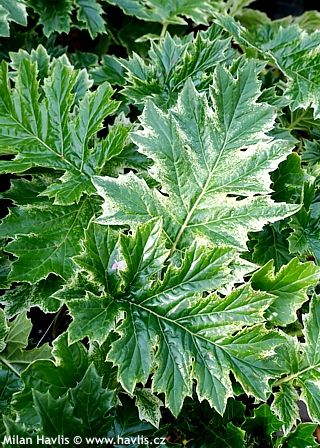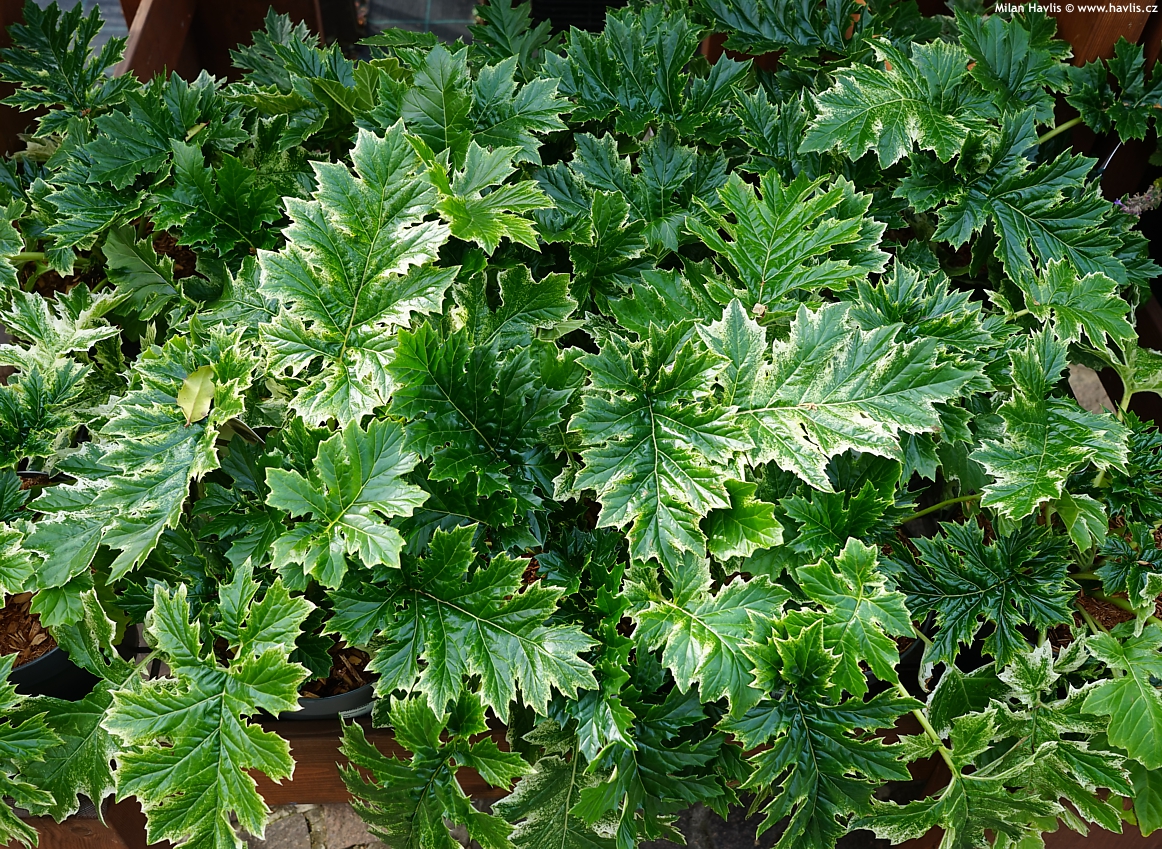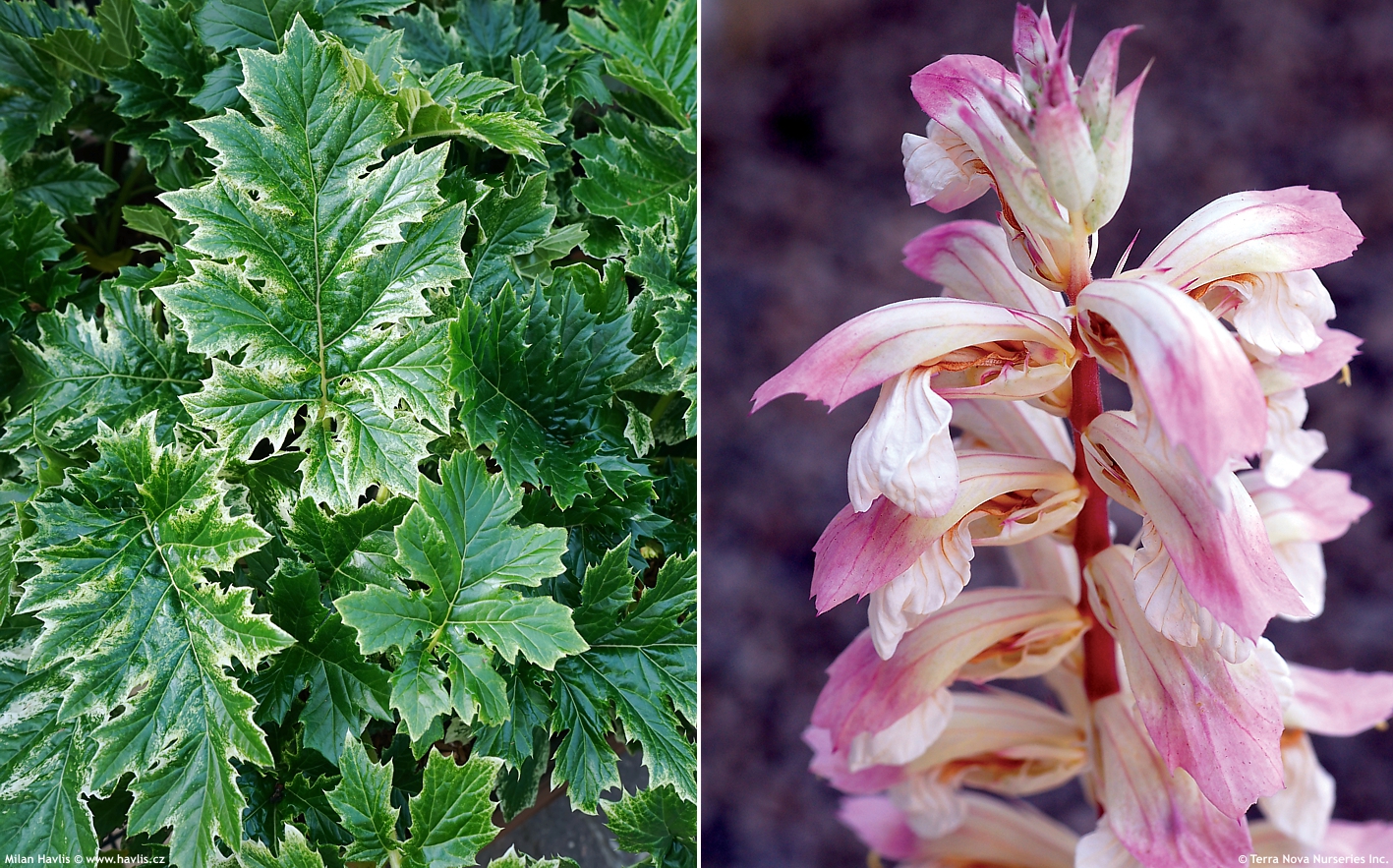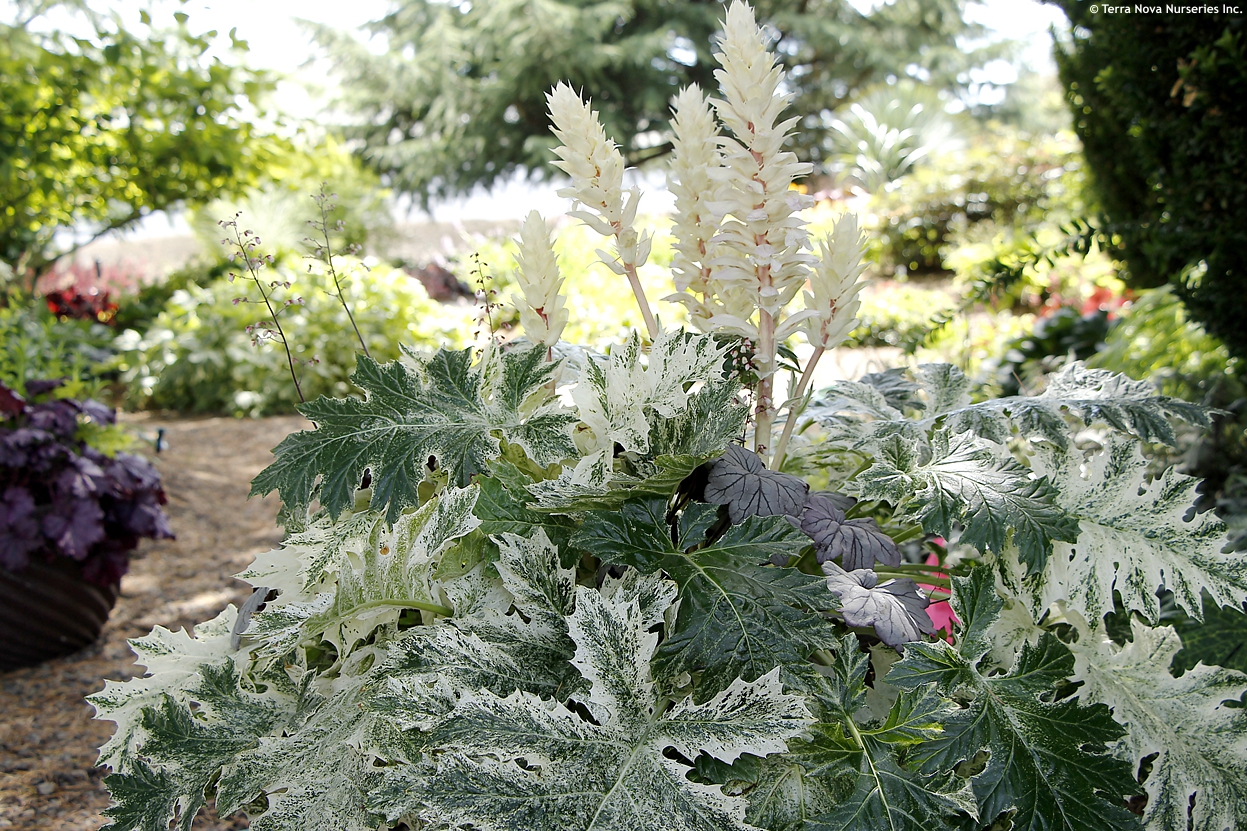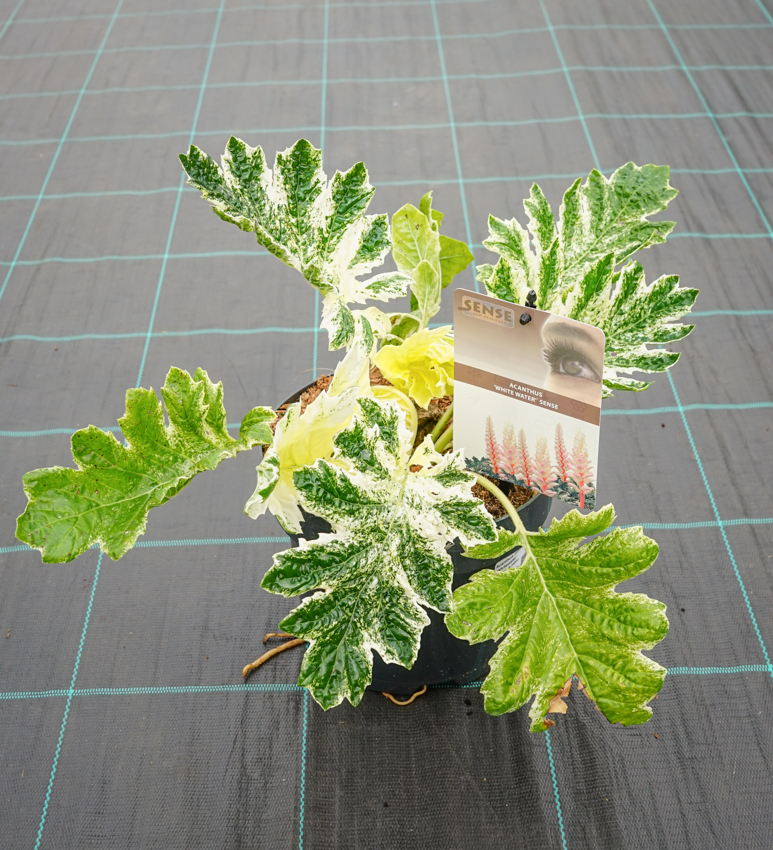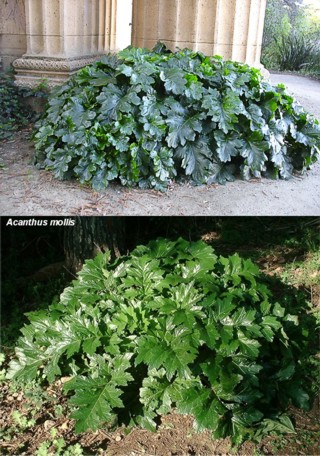Acanthus 'WHITEWATER' bear's breeches


Acanthus
When I visited Cornwall in Great Britain around 2006 in order to find some new exotic-looking plants that could grow here in USDA zone 6, in one nursery something dragged my attention more than what the nursery owner was telling me. There was a small, rounded border right across the entrance gate packed with various jungle-like plants, all of them rising from a dense mound of incredibly glossy and conspicuously lobed foliage that, despite the advanced winter, was not dead, not even tired. I learned that the miraculous plant was called bear’s breeches and that it would probably not live in our climate. It was clear that I had to have it to give it a go.
Acanthus is a unique perennial from the Mediterranean and it was first described by Carl Linnaeus in 1753. It is characterized by large architectural leaves. I would say that there is no other plant with similar foliage in our Czech flora. t can be said that they are not similar to anything that normally grows in our country. Perhaps milk thistle would be the most similar, but it is prickly like a hedgehog, while acanthus is, according to its generic name, soft (=mollis). Its leaves are deeply lobed, varying in size depending on plant’s age and strength of root system, deep to dark green and extremely glossy. They can perfectly evoke the exotic atmosphere of a rainforest or a subtropical garden.
Whitewater variety is a masterpiece created by Janet N. Egger from the Terra Nova® Nurseries in Oregon, USA. It bears beautifully variegated leaves that look like they have been intentionally white painted over and over for a patina effect. The leaves are up to 23 cm long and 17 cm wide. Whitewater is a cross between 'Summer Beauty' and 'Tasmanian Angel'® and has taken only the best from both the parents – reliable leaf colour, vigorous growth and improved hardiness.
Strong plants form about 50 cm tall, fleshy, reddish stems with super-attractive spike-like inflorescence composed of white and pink flowers at the end of summer. Flowering happens only in the warmest locations and in very fertile soil. In the mildest regions of Europe the leaves remain evergreen all through the winter, here they wilt with the first hard frost and come back again in spring.
In Mediterranean acanthus is a widespread perennial which even influenced the architecture there. In the Romanesque style, the shape of its leaf was widely used to decorate the capitals of columns, cornices, gates, etc. It was popular as an embroidery motif, in goldsmithing and decorating trays, bowls and jugs.
Here, we treat it as a perennial sensitive to winter waterlogging – plant it only in well-drained, deep soil with plenty of humus and cover it with a lot of mulch for the winter. You can remove part of the mulch in the spring, but acanthus will be grateful for mulching also during the growing season to maintain moisture. Though, it is extremely drought-resistant after rooting. Regular fertilizing from April to July will ensure the largest leaves, a healthy appearance and will significantly bring closer the possibility of flowering. Sufficiently mulched it is said to tolerate temperatures down to -27 °C. We have tested -20 °C so far and all went well.
Last update 20-10-2022.
Goods are shipped all over Europe. For Russia and U.K. and for further details please read about SHIPPING OPTIONS HERE.
Are you interested in a serious discount for orders NOV-FEB? Check your options here.
THE PRICES INCLUDE VAT of 15%. For quick conversion you can use 1 CZK = approx. 0.04 EUR
- STANDARD QUALITY - Plants of this group are 1st class quality with number of branches and overall density adequate to their size and age, considering they were container grown.
- DE LUXE QUALITY - This label guarantees a luxurious quality of manually selected plants that, compared to their height and age, are exceptionally dense and beautiful.
- EXTRA - These plants are usually mature and bigger specimens with exceptional overall appearance.
- STANDARD (as described in the plant form) means a tree with a trunk of 190-210 cm and a crown at the top, unless specified differently. The commercial size for trees is their girth measured in the height of 1m from ground.
- HOBBY - These plants are of the same quality as our standard-quality plants but younger and therefore cheaper.
- SHRUB - a woody plant with branches growing bushy from the ground level.
- HALF-STANDARD or MINI-STANDARD - a small tree with shorter trunk, its size is usually specified.
- FEATHERED - These are trees with branches growing already from the base of the trunk and up along the stem.
- GRASSES and PERENNIALS - Sizes given usually read the diameter of the pot or the clump, as specified.

































